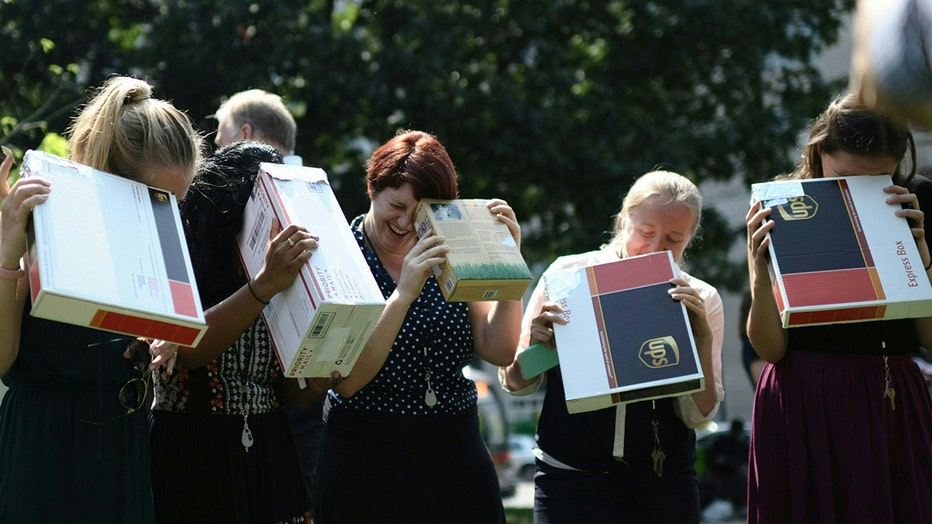‘Ring of fire’ solar eclipse viewer: How to build your own from a cereal box
An annular solar eclipse, also known as a "ring of fire,’ will sweep across a portion of the United States later this month, leaving a bright circle of sun around the moon.
But, according to eye doctors and experts, staring at the total eclipse of the sun without proper eye protection can cause permanent damage to the eyes, even if someone stares for only a few seconds.
For those who can't get their hands on a pair of eclipse glasses, there is an alternative to the fancy specs: a DIY projection box.
Here is how you can make your own (and trust us, it’s simple).

People look at the partial solar eclipse through viewing boxes in downtown Washington, DC. (Credit: ERIC BARADAT/AFP via Getty Images)
Solar eclipse projection box supplies
- Empty cereal box
- Aluminum foil
- Scissors
- Clear tape
- Marker
- Piece of white paper
How to build cereal box solar eclipse viewer
- Trace the bottom of the cereal box on a white piece of paper.
- Cut out the traced rectangle.
- Put the cut-out flat against the bottom of the cereal box.
- On the box top, cut out a square on each side of the box top, leaving the center intact.
- You should now have two openings on either side of the box top.
- Cover the left opening with aluminum foil, securing it with tape.
- Use scissors to punch a half-inch hole into the center of the foil.
During the eclipse, turn your back to the sun and look through the opening on the right side of the box top. A reflection of the eclipse will play out on the paper inside the box.
What kind of glasses do I need to watch a solar eclipse?
If you’re not interested in making your own viewing box, it is only safe to look directly at the sun while wearing special-purpose solar filter glasses. These glasses need to meet the ISO 12312-2 international standard for direct sun viewing, according to the American Astronomical Society.
Regular sunglasses are not safe for viewing any partial or annular eclipse because sunglasses allow more sunlight than is safe for your eyes.
When can I view the solar eclipse?
On Oct. 14, 2023, the annular eclipse will sweep from Oregon to Texas, covering 90% of the sun during the maximum eclipse known as annularity.
During the peak eclipse, the outer edges of the sun will be the only parts visible from behind the Moon; this is known as the "ring of fire."
Everyone in the Lower 48 states will be able to see at least part of the eclipse, but the best places to watch are in the west, including Oregon, northern California, Nevada, Utah, northeast Arizona, southwest Colorado, New Mexico and Texas.
Then, on April 8, 2024, a total solar eclipse will be visible from Texas to Maine. A total solar eclipse happens when the Moon passes between the sun and the Earth, completely blocking the sun's face for several minutes.
RELATED: How to safely watch a solar eclipse
When the sun is covered completely, known as totality, it is safe to remove your eclipse glasses when the sun is covered by the Moon. The glasses must go back on before the partial eclipse resumes and part of the Sun is visible again.
This story was reported from Los Angeles. FOX Weather contributed.

